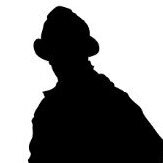Can Your Breathing Technique Make All The Difference?
-
Recently Browsing 0 members
- No registered users viewing this page.
-
Topics
-
-
Popular Contributors
-
-
Latest posts...
-
2
-
189
Crime Drunk Brit Attacks Bar Worker, Hurt by American Customer
According to that article, it was that man who started an altercation with the bar girl. So he is guilty. -
169
Middle East Gaza: We are dying slowly, save us !
Terrible thirst hits Gaza with polluted aquifers and broken pipelines Though some water comes from small desalination units run by aid agencies, most is drawn from wells in a brackish aquifer that has been further polluted by sewage and chemicals seeping through the rubble, spreading diarrhoea and hepatitis. Israel stopped all water and electricity supply to Gaza early in the war but resumed some supply later though the pipeline network in the territory has been badly damaged. Most water and sanitation infrastructure has been destroyed and pumps from the aquifer often rely on electricity from small generators - for which fuel is rarely available. Terrible thirst hits Gaza with polluted aquifers and broken pipelines -
92
EU EU civil war erupts as Italy's Giorgia Meloni explodes!
The globalists are using open borders and mass immigration with incompatible cultures to break up the nation states in their quest for this one-world government eutopia they believe in. Globalism is just rebranded communism, communism 2.0 but in a new guise and with a different name, due to the negative connotations and history associated with the previous name. -
53
US banks refuse Trump's business
Narrative. Got it. Cant challenge the lockstep spittlescreeching of ignorance -
54
Americans on SS: What will you do when SS will Cut $18,000 in 7 years?
You're egregiously misstating Mr. Sanders position on SS. He has long been aware of the fast approaching depletion of OASI. But... he does agree with my opinion that the current shortfall in SSA cash flow is NOT increasing the NATIONAL DEBT.
-
-
Popular in The Pub







.thumb.jpg.3ee24d9400fb02605ea21bc13b1bf901.jpg)



Recommended Posts
Create an account or sign in to comment
You need to be a member in order to leave a comment
Create an account
Sign up for a new account in our community. It's easy!
Register a new accountSign in
Already have an account? Sign in here.
Sign In Now